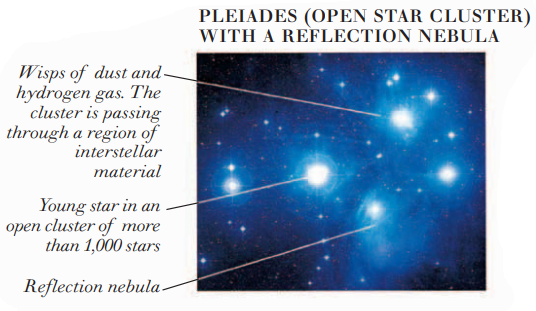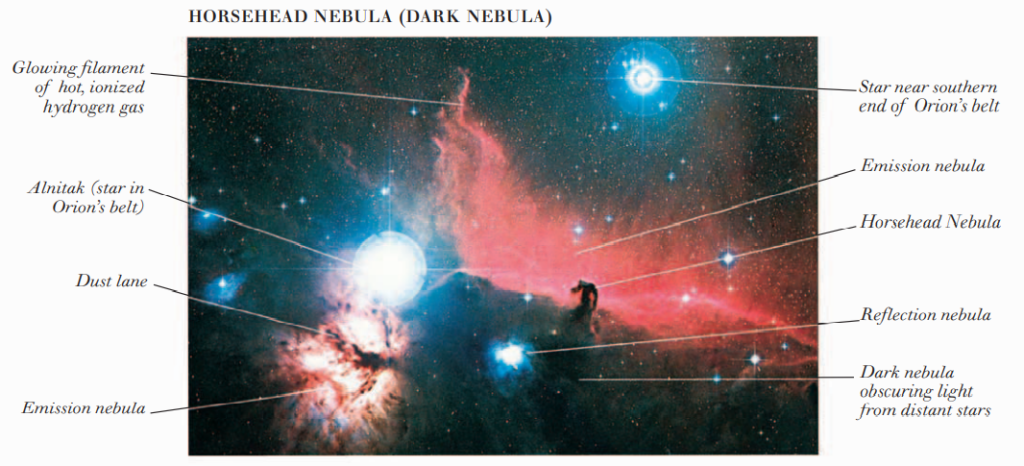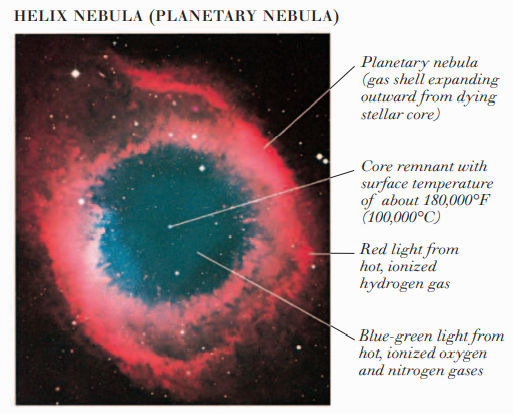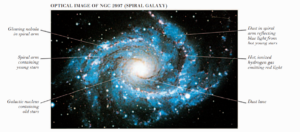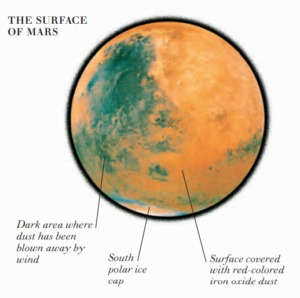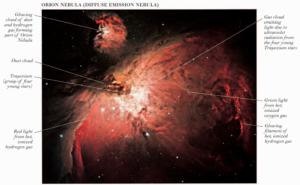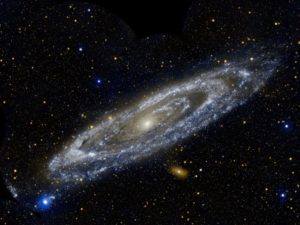NEBULAE AND STAR CLUSTERS
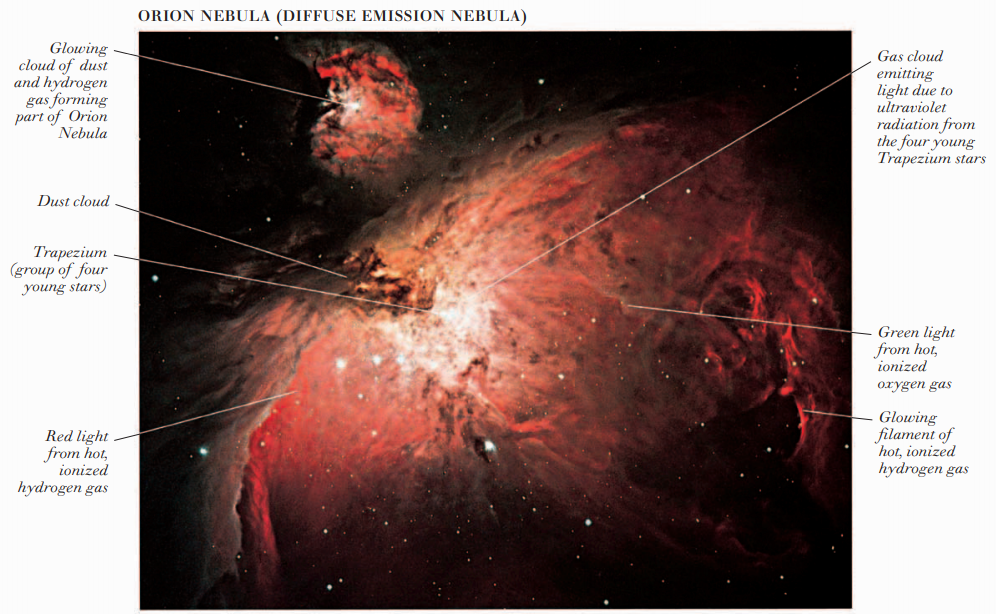
A NEBULA IS A CLOUD OF DUST AND GAS inside a galaxy. Nebulae become visible if the gas glows, or if the cloud reflects starlight or obscures the light from more distant objects. Emission nebulae shine because their gas emits light when it is stimulated by radiation from hot young stars. Reflection nebulae shine because their dust reflects light from stars in or around the nebula. Dark nebulae appear as silhouettes because they block out light from shining nebulae or stars behind them. Two types of nebula are associated with dying stars: planetary nebulae and supernova remnants. Both consist of expanding shells of gas that were once the outer layers of a star. A planetary nebula is a gas shell drifting away from a dying stellar core. A supernova remnant is a gas shell moving away from a stellar core at great speed following a violent explosion called a supernova. Stars are often found in groups known as clusters. Open clusters are loose groups of a few thousand young stars that were born from the same cloud and are drifting apart. Globular clusters are densely packed, roughly spherical groups of hundreds of thousands of older stars.
